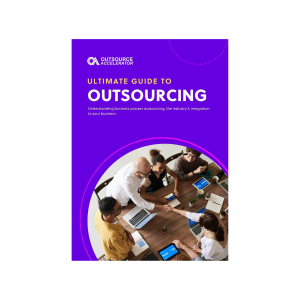Understanding Short Selling vs. Long Investing
When we jump into the stock market, two fundamental strategies emerge:
short selling
and
long investing
. Though both aim for profit, they walk distinct paths.
Long investing
is the more traditional approach, where I buy stocks predicting their value will increase over time. It’s akin to planting a seed and waiting for the tree to bear fruit. It’s straightforward and appeals to those looking for gradual growth and minimal risk.
On the other hand,
short selling
thrives on volatility. It’s about selling a stock I don’t own, hoping to buy it back at a lower price. Think of it as borrowing a book to sell, then repurchasing it when it’s less sought after, and returning it while pocketing the difference. This strategy is speculative and involves a higher degree of risk, but the potential for immediate gains is often tempting.
Risk Factor
: High for short selling, Low to Moderate for long investing.
Profit Potential
: Immediate for short selling, Gradual for long investing.
Market Outlook
: Bearish for short selling, Bullish for long investing.
This contrast paints a clear picture: while long investing seeks steady growth amid market ascents, short selling leverages market declines for quick profits. Understanding these differences is crucial for anyone venturing into the world of trading, whether you’re leveraging insights from Madaz Money or exploring the stock market independently.
Benefits and Risks of Short Selling
As I investigate deeper into the world of short selling, a strategy popularized by platforms like Madaz Money, it’s vital to weigh the benefits and risks involved. Short selling isn’t for everyone, but understanding its potential upsides and downsides can help you decide if it fits your trading style.
On the benefits side,
short selling offers the unique advantage of making profits in a declining market
. Most investors only profit when the market is up, but short sellers capitalize on downturns. This means that economic downturns, sector slumps, or even bad news for a specific company can be opportunities for short sellers to profit.
Another key benefit is the ability to
hedge against market volatility
. By short selling, you can protect other investments in your portfolio from market downturns, acting as a form of insurance.
But, the risks are significant. One of the biggest risks of short selling is the potential for
unlimited losses
. Unlike buying stocks (where the worst-case scenario is losing the initial investment), the loss potential with short selling can exceed the initial investment if the stock price rises indefinitely.
Also, short selling involves
margin trading
, meaning you’re borrowing to trade. This can amplify losses, making it important to have a solid risk management strategy.
In terms of market dynamics, short selling can sometimes lead to a
short squeeze
. This occurs when short-sellers rush to buy shares to cover their positions, dramatically driving up the stock price and, so, potential losses for those still holding short positions.
Understanding these benefits and risks is crucial before diving into short selling. It’s not just about timing the market correctly but also about managing potential losses and understanding market psychology. Successful short sellers are those who can navigate these complexities with precision and caution.
Strategies for Successful Short Selling
When delving into short selling, I’ve found that certain strategies drastically improve my chances of success. Timing, for instance, is
crucial
. It’s not just about predicting a stock’s downturn but also about knowing when to enter and exit the trade. Through
technical analysis
, I identify patterns and signals that hint at a stock’s potential decline. This method requires constant market analysis but significantly boosts the accuracy of my predictions.
Another strategy I rely on is
risk management
. Short selling, by nature, can expose me to unlimited losses, making it imperative to set strict stop-loss orders. These orders automatically close out my positions at a pre-determined level of loss, protecting me from devastating financial hits. I also diversify my short positions across various sectors to mitigate the risk of a single catastrophic event wiping out my portfolio.
Finally, staying informed about market news and sentiment is indispensable. A sudden piece of negative news can be the catalyst I need for a successful short sell. But, it’s equally important to be aware of potential short squeezes, where a stock unexpectedly rises, forcing short sellers to buy shares at higher prices to cover their positions. This awareness helps me navigate the volatile waters of short selling with more confidence and precision.
Madaz Money: Insights and Guidance
In diving deeper into the world of short selling, I’ve leveraged insights from Madaz Money, a beacon for those exploring the choppy waters of stock trading. My journey into understanding the nuances of short selling wouldn’t be as fruitful without the detailed guidance and strategies shared by experts in this domain. Madaz Money emphasizes
strategic patience
and
market research
, two pillars I’ve found indispensable for short selling success.
One core strategy highlighted is the importance of
timing
. Entering and exiting positions at the right moment can be the difference between profit and loss. Through Madaz Money, I’ve learned to analyze market trends meticulously and wait for the opportune moment before making a move. This approach has saved me from potential pitfalls by ensuring I’m not acting on impulse but informed decisions.
Another critical aspect is
risk management
. Madaz Money advocates for setting strict stop-loss orders and diversifying short positions to protect against unforeseen market volatilities. By adhering to these principles, I’ve managed to mitigate risks significantly, making my short selling ventures more secure and profitable.
Staying updated with the latest market news is also crucial. Madaz Money’s insights into market sentiment have proved invaluable for identifying short selling opportunities and avoiding potential short squeezes. By keeping my finger on the pulse of market trends and news, I’ve been able to make informed decisions that align with my trading strategy and risk tolerance.
Madaz Money not only equipped me with the tools and knowledge for successful short selling but also instilled a sense of confidence in my trading decisions. Exploring the complexities of short selling has become more manageable with the structured guidance and insights provided.
Conclusion
Diving into short selling with guidance from Madaz Money has illuminated the path for traders looking to navigate this complex strategy. By emphasizing the importance of patience, thorough market research, and strategic timing, I’ve uncovered the essence of making informed decisions in the volatile world of stock trading. Risk management, a cornerstone of trading success, has been underscored with practical advice on using stop-loss orders and the significance of diversification. Staying updated on market news and sentiment is crucial for seizing opportunities and steering clear of potential pitfalls like short squeezes. With Madaz Money’s insights, I’m now better equipped to approach short selling with confidence, ready to tackle its challenges with a well-informed strategy.
Frequently Asked Questions
What is short selling?
Short selling involves borrowing a stock, selling it at its current price, and then buying it back later at a lower price to return to the lender, profiting from the price difference.
Who is Madaz Money?
Madaz Money is a reputable source in the stock trading industry, known for providing strategic insights, tools, and knowledge to help traders make informed decisions, especially in short selling.
How important is timing in short selling?
According to Madaz Money, timing is critical in short selling. It requires strategic patience and thorough market research to make informed decisions and capitalize on market downturns.
What are the key strategies for managing risks in short selling?
Key strategies for managing risk include setting stop-loss orders to minimize losses and diversifying your portfolio to spread out potential risks, as advised by Madaz Money.
How can you stay informed about market opportunities and risks?
Staying abreast of market news and sentiment is crucial for identifying short selling opportunities and avoiding risks like short squeezes. Madaz Money emphasizes the importance of continuous learning and staying informed for successful trading.
Can short selling boost traders’ confidence?
Yes, according to Madaz Money, having the right tools, knowledge, and strategies for short selling can significantly boost traders’ confidence in making decisions and navigating the complexities of the market.








